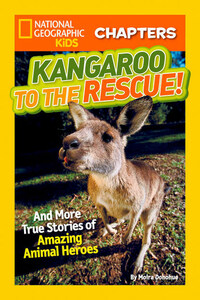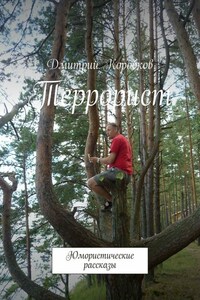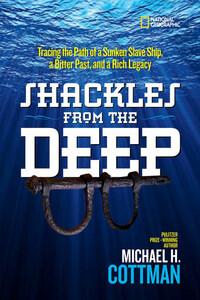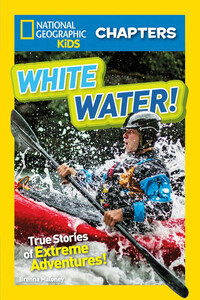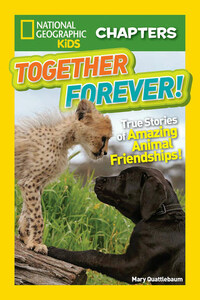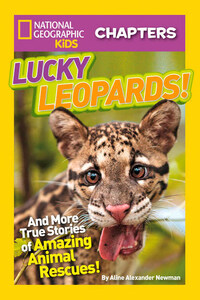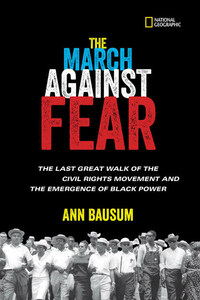Copyright © 2015 National Geographic Society
All rights reserved. Reproduction of the whole or any part of the contents without written permission from the publisher is prohibited.
Published by theNational Geographic Society
Gary E. Knell, President andChief Executive Officer
John M. Fahey, Chairman of the Board
Declan Moore, Executive Vice President; President, Publishing and Travel
Melina Gerosa Bellows, Publisher and Chief Creative Officer, Books, Kids, and Family
Prepared by the Book Division
Hector Sierra, Senior Vice President and General Manager
Nancy Laties Feresten, Senior Vice President, Kids Publishing and Media
Eva Absher-Schantz, Design Director, Kids Publishing and Media
Jay Sumner, Director of Photography, Kids Publishing and Media
Jennifer Emmett, Vice President, Editorial Director, Kids Books
R. Gary Colbert, Production Director
Jennifer A. Thornton, Director of Managing Editorial
Staff for This Book
Shelby Alinsky, Project Editor
Marfé Ferguson Delano, Editor
Jay Sumner, Photo Editor
Callie Broaddus, Associate Designer
Ruth Ann Thompson, Designer
Paige Towler, Editorial Assistant
Erica Holsclaw, Special Project Assistant
Sanjida Rashid, Design Production Assistant
Margaret Leist, Photo Assistant
Grace Hill, Associate Managing Editor
Joan Gossett, Production Editor
Lewis R. Bassford, Production Manager
Susan Borke, Legal and Business Affairs
Production Services
Phillip L. Schlosser, Senior Vice President
Chris Brown, Vice President,
NG Book Manufacturing
George Bounelis, Senior Production Manager
Nicole Elliott, Director of Production
Rachel Faulise, Manager
Robert L. Barr, Manager
The National Geographic Society is one of the world’s largest nonprofit scientific and educational organizations. Founded in 1888 to “increase and diffuse geographic knowledge,” the Society’s mission is to inspire people to care about the planet. It reaches more than 400 million people worldwide each month through its official journal, National Geographic, and other magazines; National Geographic Channel; television documentaries; music; radio; films; books; DVDs; maps; exhibitions; live events; school publishing programs; interactive media; and merchandise. National Geographic has funded more than 10,000 scientific research, conservation, and exploration projects and supports an education program promoting geographic literacy.
For more information, please visit nationalgeographic.com, call 1-800-NGS LINE (647-5463), or write to the following address:
National Geographic Society
1145 17th Street N.W.
Washington, D.C. 20036-4688 U.S.A.
Visit us online at nationalgeographic.com/books
For librarians and teachers: ngchildrensbooks.org
National Geographic supports K–12 educators with ELA Common Core Resources. Visit natgeoed.org/commoncore for more information.
More for kids from National Geographic: kids.nationalgeographic.com
For rights or permissions inquiries, please contact National Geographic Books Subsidiary Rights: ngbookrights@ngs.org
Trade paperback
ISBN: 978-1-4263-1913-6
Reinforced library edition
ISBN: 978-1-4263-1915-0
eBook ISBN: 978-1-4263-2225-9
v3.1
Version: 2017-07-11
Luke Richards and his friends were driving home late one evening.
“Watch out!” one of the boys yelled. “There’s something in the road!”
Squee!! The driver hit the brakes and swerved. He avoided hitting the lump in the road.
“Pull over, mate,” Luke said. He wanted to move whatever was in the road out of the way. Luke hopped out of the car.
The lump turned out to be a dead kangaroo. That would be a shock if you lived in the United States. But Luke lived in Australia. Millions of kangaroos live there, too. Unfortunately, sometimes they wander into the road in front of cars and trucks.
Luke was sad to see the kangaroo, but he knew he had to move it out of the way. He grabbed the animal by the tail and dragged it to the side of the road. It was heavy. Full-grown eastern gray kangaroos, or “roos,” as they say in Australia, weigh about 145 pounds (66 kg).
Then Luke saw something amazing. The kangaroo’s belly twitched. Kangaroos are a kind of mammal known as marsupials (sounds like mar-SOO-pee-ulz). Females have a pouch across their bellies. That’s where they keep their babies, called joeys (sounds like JOE-eez). Luke put his hand in the pouch. Gently, he removed a joey. It had survived the accident!
Luke didn’t think his parents would be happy if he brought the joey home. But he looked into the animal’s frightened eyes. He just couldn’t leave the little roo behind.
